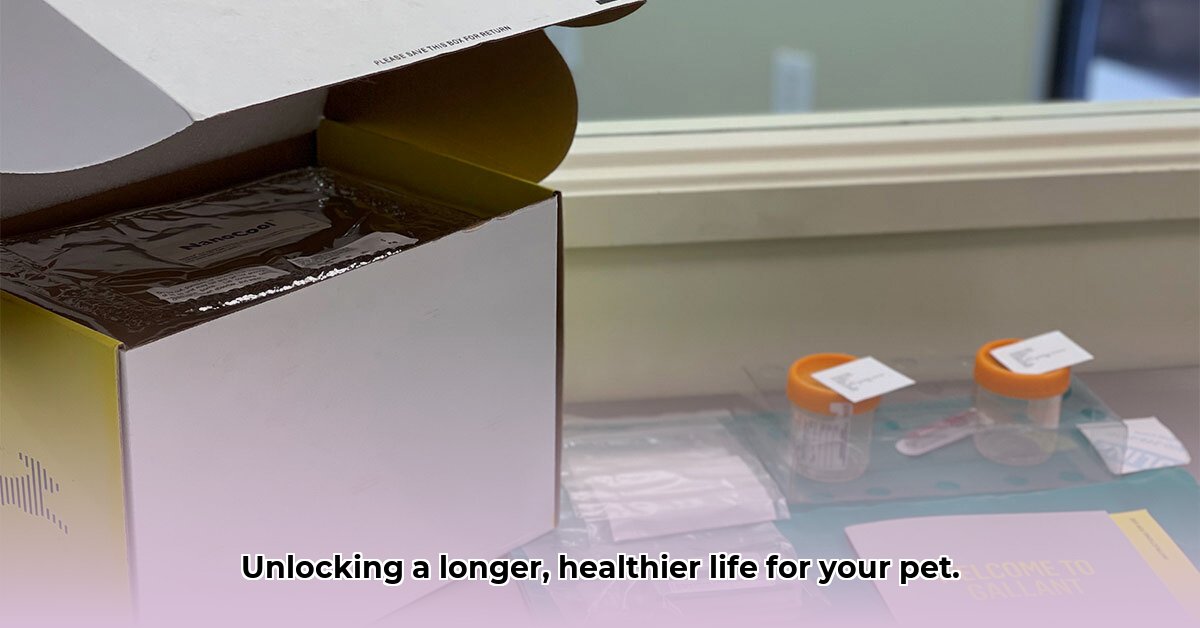
The veterinary healthcare landscape is undergoing a transformation, with Gallant Stem Cells emerging as a prominent player in the burgeoning field of regenerative medicine for animals. This company leverages the power of mesenchymal stem cells (MSCs) – cells with remarkable regenerative capabilities – to potentially treat a range of inflammatory and immune-related conditions in pets. But is this innovative approach all it's cracked up to be? This article examines Gallant's progress, challenges, and the future potential of its technology.
How Gallant Stem Cell Therapy Works
Gallant's therapy utilizes mesenchymal stem cells (MSCs) (cells capable of differentiating into various cell types and promoting tissue repair). These aren't quick fixes; rather, MSCs subtly stimulate the body's natural healing mechanisms. They work by reducing inflammation, minimizing scar tissue formation, improving blood flow, and potentially regenerating healthy tissue. It's akin to giving the body a helping hand to heal itself more effectively. While the underlying biological mechanisms are complex, involving intricate interactions between the MSCs and the pet's immune system, the core concept is straightforward: enhance the body's inherent healing abilities. Further research continuously refines our understanding of MSCs' full potential and therapeutic applications.
Gallant's Business Model: A Post-Shark Tank Analysis
Gallant's appearance on Shark Tank propelled the company into the spotlight. Subsequent revenue growth has been substantial, reaching a reported $5.9 million annually. However, the journey hasn't been without its hurdles. Initially, high production costs led to financial losses. Gallant ingeniously adapted by implementing a more accessible pricing structure, offering options like a lifetime fee or manageable monthly payments. This strategy broadened market reach, making the treatment more accessible to pet owners. But the crucial question remains: Can Gallant sustain this growth trajectory while balancing cost-effectiveness with the demands of scaling production and distribution? The company's long-term financial sustainability is a key factor determining its ultimate success, especially considering the potential for future, potentially more expensive, treatment discoveries.
Regulatory Landscape and Competitive Factors
The regulatory pathway for novel veterinary treatments is arduous. Gallant needs to navigate this complex landscape successfully. Greater transparency regarding its regulatory status would undoubtedly enhance investor and public confidence. Securing and maintaining necessary approvals are essential for ongoing operations and market expansion. Any regulatory roadblocks could significantly impede its growth. The details of Gallant's regulatory journey are still evolving. While the competitive landscape remains relatively undefined, the increasing interest in regenerative veterinary medicine suggests that competition will likely grow.
Challenges and Risks: A Risk Assessment
The unexpected passing of founder Aaron Hirschhorn represents a significant challenge. His leadership and vision will be sorely missed. The company must effectively manage this leadership transition to maintain its momentum. In addition to leadership challenges and financial stability concerns, market acceptance among veterinarians will be a crucial determinant of success. The following risk assessment matrix highlights key considerations:
| Risk Factor | Likelihood | Impact | Mitigation Strategy |
|---|---|---|---|
| Regulatory hurdles | Medium | High | Proactive engagement with regulatory bodies; robust clinical trials |
| Market adoption | Medium | Medium | Strategic partnerships with veterinarians; targeted marketing |
| Competition | Low | Medium | Strong intellectual property protection; continuous innovation |
| Leadership transition | High | High | Comprehensive succession planning; fostering internal talent |
| Financial sustainability | Medium | Medium | Optimized pricing; efficient operations; potential further funding |
Future Outlook: A Balanced Perspective
Gallant's stem cell therapy represents a significant advancement in veterinary medicine. Its potential benefits are substantial, and the initial progress is encouraging. However, considerable challenges persist. Long-term success hinges on navigating regulatory processes, achieving widespread market acceptance, effectively managing the leadership transition, and ensuring financial stability. While the company's adaptability and revenue growth are positive signs, considerable uncertainty surrounds its future. The question of whether Gallant will revolutionize pet healthcare is one that only time can fully answer. Continued research and evolving market dynamics will play pivotal roles in determining the ultimate impact of this innovative technology. Only further clinical trials and longitudinal studies can provide a more definitive assessment of the technology's long-term effectiveness. The need for transparency and clear communication with stakeholders will be crucial for continued success.
Navigating the Regulatory Maze: A Path Forward for Veterinary Stem Cell Therapies
- Global regulatory harmonization is crucial: Inconsistencies across jurisdictions create significant hurdles for companies developing and commercializing these therapies.
- Standardized testing protocols are needed: This would streamline the approval process and facilitate comparison between studies.
- Collaboration between researchers and regulatory agencies: Joint efforts to establish clear guidelines and foster transparency would accelerate advancement.